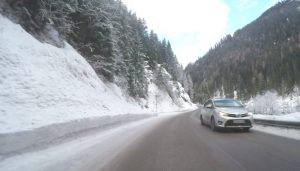
Winter driving is predominantly characterised by less traction available on the road. Basically, your tyres have less grip because the road’s surface will have ice, snow, mud or water on it. As well as slippery road surfaces, this is a…
If you learned to drive during summer, chances are that you won’t have driven in snow before. The main issues with snow are that it reduces the friction between your vehicle and the road, and can block roads. Ideally, if…
When you learn to drive you will have some experience of hazardous conditions, but it’s unlikely that you will experience all kinds of difficult situations that you might encounter. For example, you could learn to drive in Auckland and have…